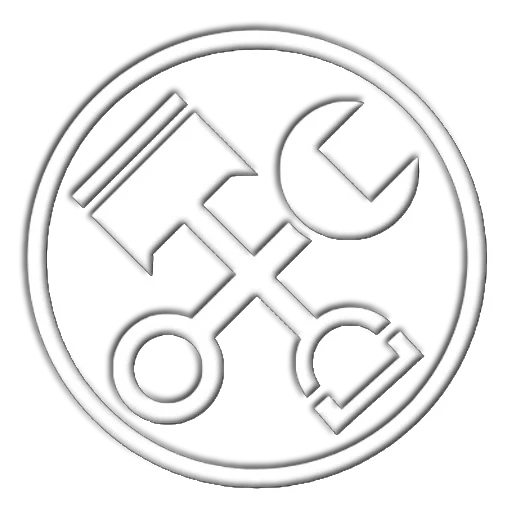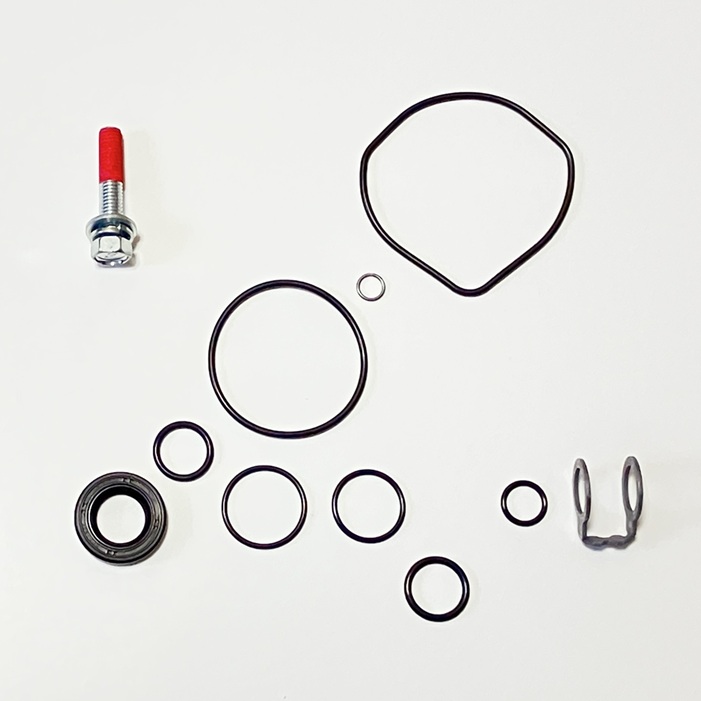
Power Steering Pump Overhaul Kit with Extra Parts
JPY 6,500
Product Overview
This Overhaul Kit is designed for the genuine SUBARU 34430FE031/34430FE032 power steering pump, helping to restore smooth steering, prevent leaks, and reduce noise.
Key Benefits:
- Genuine Subaru parts for reliable performance
- Restore hydraulic efficiency and reduce pump strain
- Ideal for regular maintenance
Product Details
| Power Steering Pump Overhaul Kit for | 34430FE031 34430FE032 |
| SUBARU Genuine Parts Product Contents | – Overhaul Kit 34490FE000: Includes O-rings, Oil seal, C-clip – O-ring for Connector-pump – Gasket for High-Pressure Hose Connection – Pre-coated bolt |
| SUBARU IMPREZA | Models: GDB Bugeye: Atype, Btype |
| Engine | 2.0L EMPI DOHC / EJ20, EJ205, EJ207 |
| Years | 2002-2003 |
| Mission | MT |
| Drive train | 4WD |
| Power Steering Pump for 34430FE030 | Please note that part 34430FE030 may not require the O-ring for the connector pump; confirmation with the actual item is necessary. |
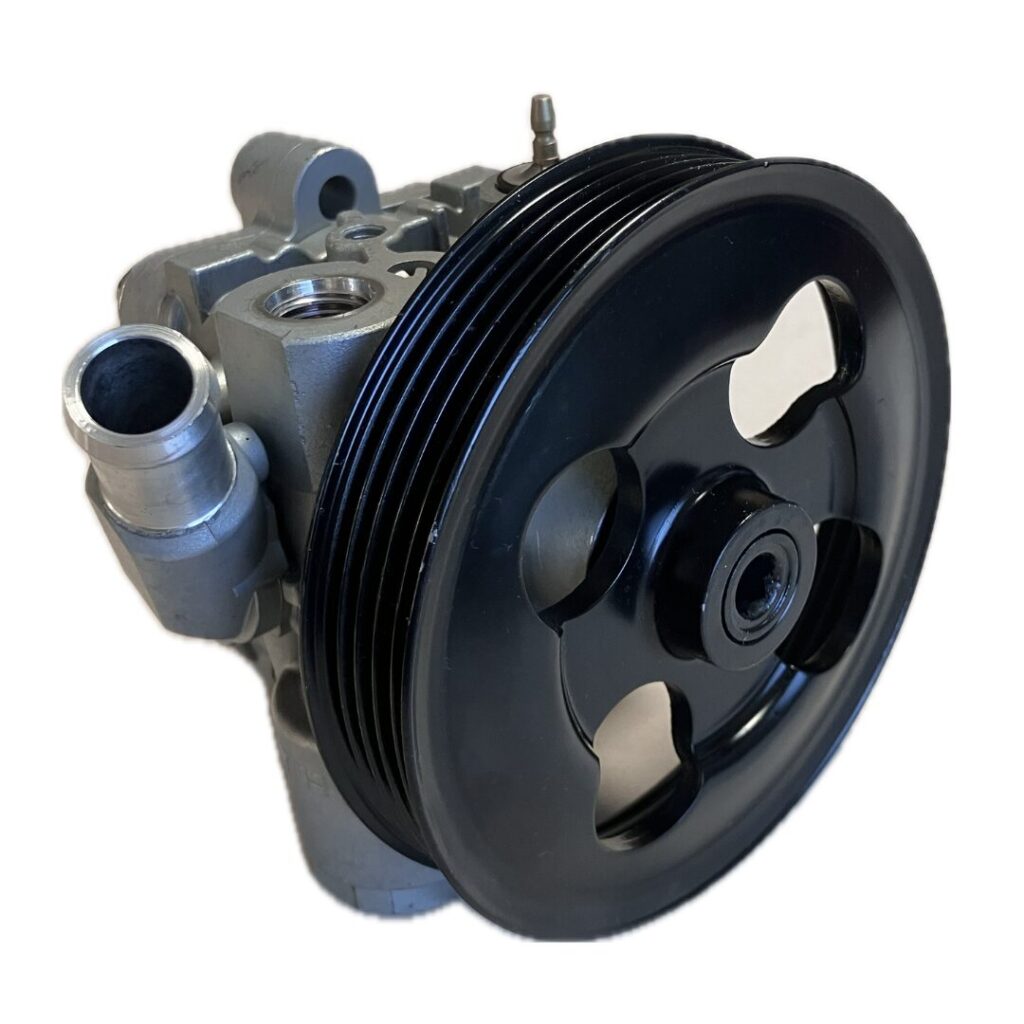
- Pre-coated bolts (MEK-processed type)
On the Subaru Impreza, the power steering pump bracket is secured using pre-coated bolts (MEK-processed type) due to the high vibration and load in this area.
These bolts feature a special treatment in which adhesive components are micro-encapsulated on the threads. When the bolt is tightened, the microcapsules break, releasing the adhesive, which then begins to cure. This ensures a secure fastening, helping to prevent loosening caused by vibration
While it is possible to clean the threads and apply a thread-locking compound if the bolt is reused, I personally recommend using genuine pre-coated bolts whenever they are available. This provides long-term reliability and safety.
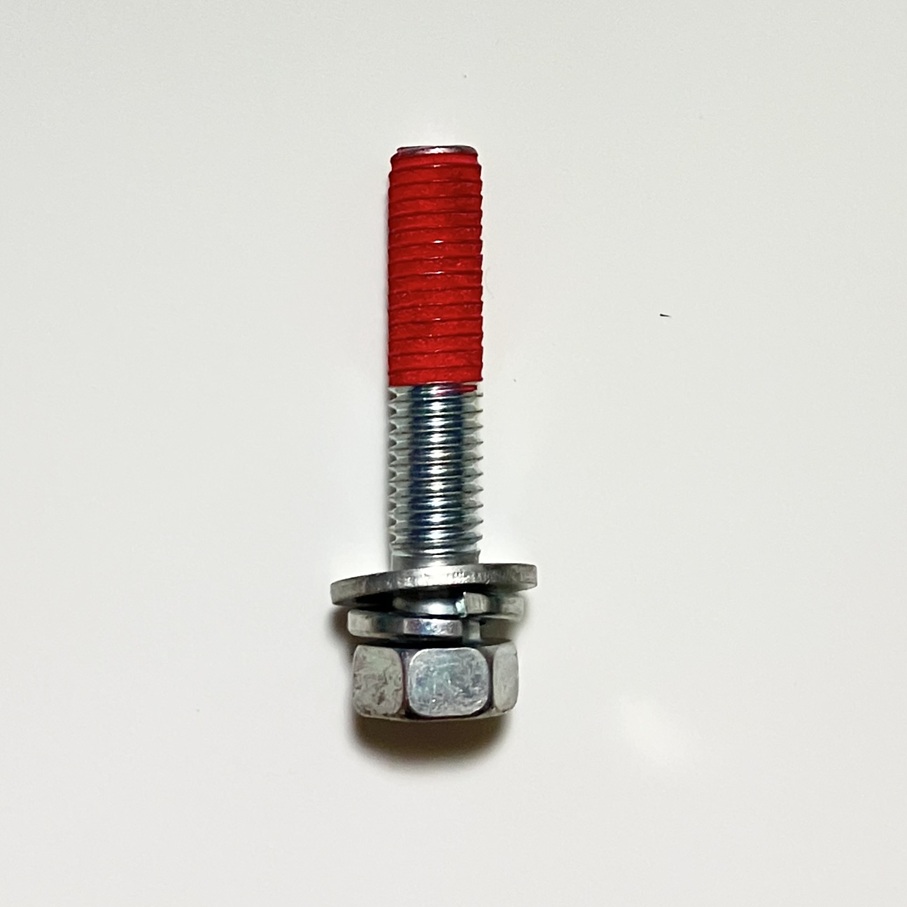
- Please kindly note that the C-clip, the pressure switch, its gasket, the harness, and the spring have been discontinued and are no longer available.
- This power steering pump uses a housing-supported structure instead of a bearing.
If seizure occurs between the shaft and the housing, both the shaft and the housing would need to be replaced.
Since the housing is supplied only together with the case and the case cannot be ordered as an individual part, the entire power steering pump must be replaced as an assembly in such cases.
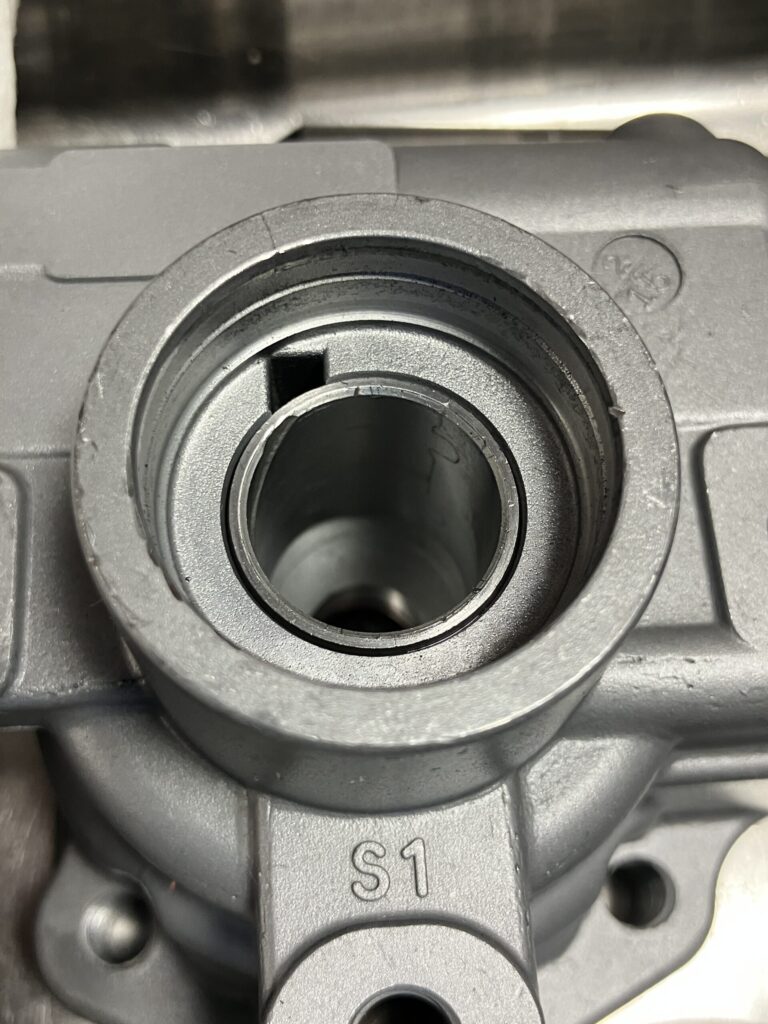

Contact Us
Feel free to contact us with any questions or service requests.
Prices on our website are slightly lower than on eBay, as there are no additional marketplace fees.
You’re welcome to choose whichever option is more convenient — the product and quality remain the same.
Power Steering Pump Overhaul – Recommended Hose Replacement
On older vehicles, when overhauling the power steering pump, we recommend replacing the hoses at the same time.
Hoses are prone to age-related wear such as hardening and cracking, and the clamping force of the clamps may also deteriorate over time.
Even if there were no leaks before, it is not uncommon for power steering fluid to start seeping from the hoses after the final inspection or test run. This often occurs because the process of removing and reinstalling the hoses can put additional stress on aged components, leading to seepage after reassembly.
Note: For some models, hoses may already be discontinued. Please feel free to contact us for availability.
Spring Replacement During Power Steering Pump Overhaul
When performing an overhaul, I personally choose to replace the spring if it is still available and not discontinued.
This is not something that must always be done, but rather one approach based on my experience, and I hope it may serve as a helpful reference.
Please note that the following factors do not necessarily occur in every case; they can vary depending on the design margins and the operating conditions of the vehicle. Below are some common patterns that may cause a spring to lose its original performance:
- Fatigue from repeated stress
Springs undergo countless cycles of compression and release, which can lead to metal fatigue. Even under relatively low loads, long-term use may result in reduced elasticity or, in rare cases, an increased likelihood of fracture. - Creep (deformation under constant load)
When a spring remains compressed over an extended period, it may gradually undergo plastic deformation, leading to a shorter free length. This is more likely to occur in high-temperature environments (around 80–100°C near power steering fluid). - Heat-related degradation
Prolonged exposure to high temperatures can alter the metal structure, causing the spring constant to deviate from its original specification. Depending on the material, heat history may reduce its elasticity and recovery. - Corrosion and wear
Surface corrosion or wear can weaken the spring’s actual strength. In some cases, its load capacity may decrease even when there are no obvious visual changes.
Vane-Type Hydraulic Power Steering Pump: Basic Functions and Common Problems
When the power steering pump fails, it can cause symptoms such as heavy steering, unusual noises, or fluid leaks.
To learn more about how this part works and the common causes of failure, visit the link below:
How Rally, Autocross, and Hillclimb Driving Stress the Power Steering Pump
Frequent and Rapid Steering Input
- Continuous steering corrections:
Rally, autocross, and hillclimb events involve tight corners, slaloms, and quick transitions. Drivers often make rapid steering inputs to maintain control at high speed or to set up for the next obstacle.
This forces the power steering pump to operate at high pressure for extended periods, placing greater strain on the system compared to normal driving. - Quick countersteering and adjustments:
On loose surfaces (gravel, snow) or during sudden traction changes, countersteering and quick steering corrections are essential.
These sharp, high-frequency inputs generate momentary spikes in hydraulic load on both the pump and steering rack.
High Tire Grip Variations and Steering Kickback
- Uneven surfaces and lateral slip:
Rally and rallycross often take place on mixed or rough surfaces, while autocross and hillclimb are typically on tarmac. Sudden grip changes or side slip generate strong forces that kick back into the steering system. - Increased steering resistance:
During these motorsports, tires frequently operate at extreme slip angles or experience high grip conditions.
The power steering system must constantly overcome this resistance, demanding higher hydraulic pressure.
Fluid Overheating and Degradation
- Pump overheating:
Extended high-load operation, especially in low-speed technical sections, causes power steering fluid temperature to rise rapidly. - Fluid foaming (cavitation):
As temperature increases, fluid viscosity drops. Under heavy pump load, this can lead to cavitation, forming air bubbles within the fluid.
Since air is compressible, this results in unstable hydraulic pressure and may temporarily reduce steering assist. - Reservoir overflow:
Foaming can increase fluid volume, causing overflow from the reservoir.
If fluid comes into contact with hot engine components, it can pose a safety hazard.
Loss of fluid may also lead to pump starvation or even failure due to overheating.
Maintaining Your Power Steering System
High-performance driving inevitably puts extra stress on the power steering system of your Subaru Impreza.
To prevent unexpected pump failure, noise, or fluid leaks during competition, regular inspection and timely overhaul are essential.
